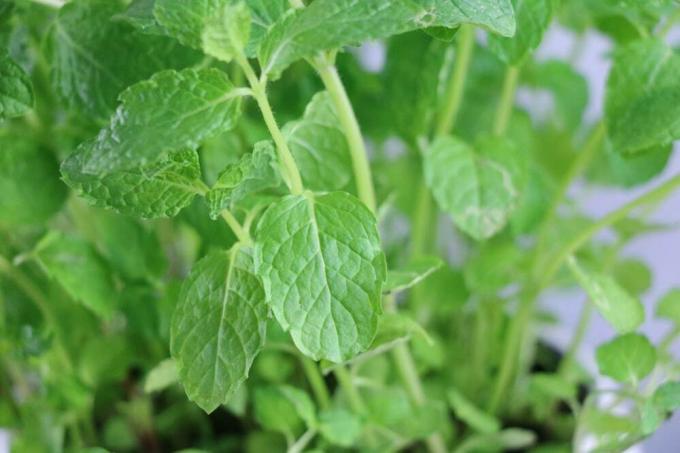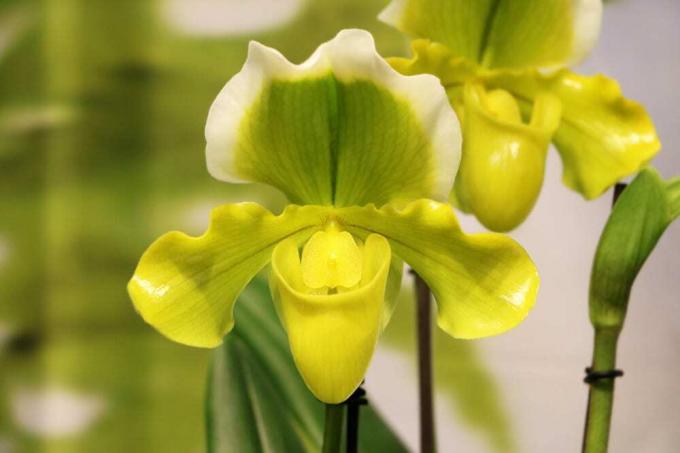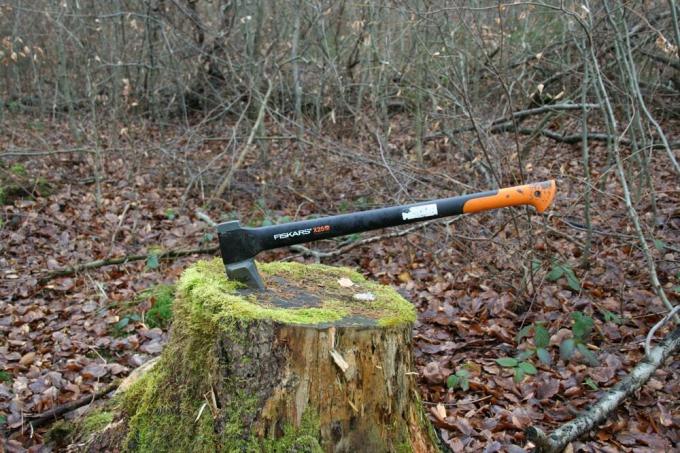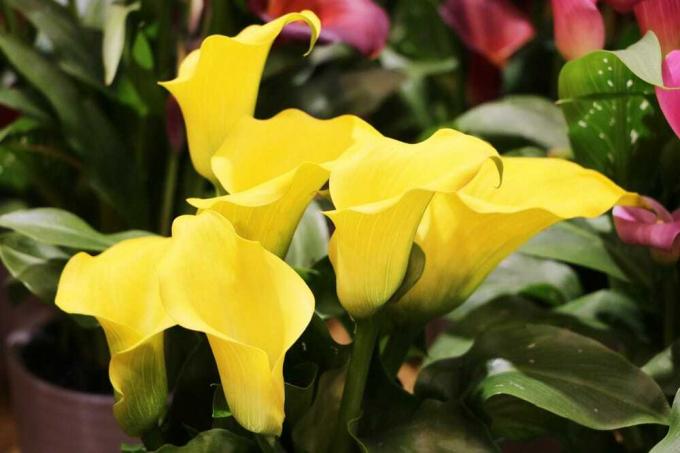

Table of contents
- Rhizome Lock Definition
- Characteristics
- Plants with rhizomes
- Required tool
- choose location
- build in
- Lock out tub or barrel
- Rhizome barrier made of pond liner and Co.
- Install later
- Conclusion
There are many plants, such as the popular bamboo, that reproduce underground through what are known as rhizomes. This happens very quickly and if these snaking roots are not stopped, the plants can grow unhindered anywhere in their own garden and even into the neighbor's. A rhizome barrier, which is used in the soil around the plant when it is first planted, helps against this. You can buy these locks ready-made in stores, if you want to build it yourself, you can find the instructions here.
Rhizome Lock Definition
Different types of plants also have different roots. There are shallow-rooted plants, deep-rooted plants and plants such as bamboo, which is popular in the garden, and have rhizomes. If these rhizomes are not prevented from spreading, the plants will grow out of the ground throughout the garden and even in the neighboring garden. A dam is needed to prevent the shoots from which the new plants grow from spreading underground everywhere. This must also limit the area underground in which the plant is allowed to spread. The rhizome barrier must be so dense that no sprouts can penetrate. These usually look like this:
- made of durable plastic
- Polyethylene (HDPE)
- Polypropylene (PP)
- are available in roll form
- plastic or metal tubs are also suitable for smaller restrictions
- an old plastic water butt can also be used for small beds
- Pond foil, roofing felt or other tarpaulins are only suitable to a limited extent
- only recommended for lighter rhizomes
- Bamboo rhizomes can pierce themselves
Characteristics
In order for the selected rhizome barrier to achieve the desired effect, it must fulfill certain purposes. Therefore, the size of the desired area and the strength of the shoots should always be considered in advance. In addition, the rhizome barrier used should have the following properties, otherwise the strength could be affected:
- Parts located above ground must not be affected by the sun
- Frost must not lead to brittleness
- it must be resistant to rodents
- it must not release any pollutants into the earth
Tip:
Just putting a plastic sheet around the plant in the ground does not bring the desired effect. The hobby gardener should therefore get good advice from the trade before buying the barrier, even if the purchase could involve a few more costs.
Plants with rhizomes

Every hobby gardener knows that bamboo can spread unhindered in the garden if it is not stopped. But there are many other plants that also seek their way underground via the rhizomes and then at one completely different place in the garden or even at the neighbor's, start to sprout again from these earth sprouts. It only takes a short time and the entire garden can be conquered, in such a case other plants often have no chance of surviving. But which plants have rhizomes that should be contained by a barrier when planting. Here are some of the specimens:
- Raspberry bushes also belong to the rhizome-forming plants
- Shallow roots, but install a barrier at a depth of 40 cm
- new popular plant sea buckthorn
- a depth of 60 cm should be planned for here
- often popular in the garden, the vinegar tree
- Roots not as strong as bamboo
- one pond liner thickness is sufficient as a barrier
- Mint is not stopped, it conquers the whole garden
- Ideally cultivate in a container
Of course there are many more plants that need a root barrier. Ideally, the seller will be asked directly when buying from a good garden specialist shop whether the plant reproduces underground via rhizomes. If this is the case, you should not refrain from using the dam directly when planting, even if this means more work at first. Otherwise, propagation can be poorly controlled and permanent removal can then usually only be carried out by specialists.
Required tool
Before installation, the required tools and material should be collected. Depending on which plant the barrier is needed for, the thickness of the foils used must be selected. A small excavator, which can be rented from a specialist dealer, should be available for the installation. Because a bed that can also be a good twelve square meters, with a spade and a shovel up to Excavating to a required depth of 65 cm then involves a lot of work and effort itself. Especially with the bamboo plants, you have to dig very deep so that the rhizomes don't look for a way under the built-in barrier. Additional tools are required as follows:
- cordless screwdriver
- small drill
- for screwing the locking bar
- alternatively foil sealing device or hot air dryer
choose location
Now the location for the plant is chosen. A bamboo, for example, should be given at least an area of three square meters in which it can spread, but a larger bed is more ideal. The border is cut off with a spade, after which the entire circumference can be measured. Accordingly, the rhizome barrier is then bought commercially in the specific required length. It is important that the barrier closes well at the seam so that no roots can get through here. Once the location has been selected and the material procured accordingly, installation can begin.
build in

Ideally, a small excavator is rented for large areas, with which the bed can be excavated. Then the work goes faster. These excavators can be rented by the hour or by the day. Although this makes it a little more expensive, if a large bed has to be dug out about 60 centimeters, then this is not done so quickly with a spade. When installing, proceed as follows:
- Cut the plastic film to the desired length
- drill holes for the aluminum rail in both ends
- work carefully, holes must be at the same height
- Use foil around the bed
- about five to ten centimeters should look out of the ground later
- this prevents roots from growing over the barrier
- apply the barrier at a slight angle in the upper area
- so the roots do not grow downwards, but rather upwards
- fasten the ends with an aluminum rail to the holes with screws
- alternatively seal with foil sealer or hot air gun
Once the liner is installed around the bed from the inside, some soil is backfilled along the dam to secure it. Then the desired plants can be used and the remaining soil can be filled in again.
Tip:
If you want to install a rhizome barrier made of resistant plastic, you should get another person to help, because it can be done right difficult to unwind the hard foil from the roll and sink it into the ground around the bed so that no roots can find a way can. And when fastening the seam later, four hands are more helpful than just two.
Lock out tub or barrel
Alternatively, for only small beds that are to be created, for example for a single raspberry bush or a mint plant a tub made of plastic or metal can be chosen, an old water butt cut to the desired height can also be used. This is done as follows:
- Dig out the bed according to the size of the tub to be used
- Remove soil from tub or rain barrel
- alternatively drill holes to drain the irrigation water
- then insert into the bed
- about five to ten centimeters should be above the ground
- Partially fill in the soil
- plant desired plants
- fill in the remaining soil
Tip:
These tubs are good for small beds, as the walls are very solid and the roots cannot find a way down. Likewise, there is no way for the rhizomes to get through any seams, since the tray is inserted seamlessly.
Rhizome barrier made of pond liner and Co.
Pond liner can also be used to a limited extent, but this can only be used for plants with weaker rhizome formation, as otherwise the thinner liner can quickly be broken through. Also, this foil is usually not strong enough to offer sufficient protection against roots growing up from the ground. Even roofing felt is not always a good choice. But these materials are often used when they are still in the shed and left over from other work. If bamboo is planted, these materials should not be used. However, this can stop the raspberries or sea buckthorn. However, if you want to be on the safe side, you can install a lock made of solid plastic materials.
Tip:
Especially when bamboo is planted on the bank of a pond, it is always advisable to additionally protect it with a barrier surrounded by solid plastic, since the pond liner is in no way sufficient to stop the increased growth to the outside command.
Install later
Of course, rhizome barriers can also be used later if this was neglected when planting or if the garden was already taken over in this form. If the root suckers are already everywhere in the garden, this is recognized by the fact that the corresponding plants shoot out of the ground everywhere. These must then be removed as soon as possible. Likewise, all root suckers from the mother plant to the daughter plants must be cut off and ideally removed from the earth. This can be very difficult, especially with bamboo, because it has very strong roots that cannot be easily cut through. Then you might need a saw or an ax. The procedure for setting up the lock is as follows:
- Dig a gap about 60 cm deep around the plant
- put the lock in here
- about five to ten centimeters sticking out upwards
- Bend the top edge inwards a little
- close with aluminum rail
- Fill the gap with earth again
For the next few months, you should always be on the lookout for any sprouting seedlings outside the bed. It is always possible that not all roots have been removed. The daughter plants may have already formed their own rhizomes outside the bed, which will allow further new plants to emerge.
Conclusion
Anyone who brings new plants into the garden should find out in advance whether these rhizomes, So form underground runners, from which then form new plants from the earth everywhere in the garden can. Most hobby gardeners know that bamboo needs a rhizome barrier, but many other plants, such as the tasty raspberry or mint, are forgotten here. Installation is easy if the instructions are followed and should definitely be done when first planting. Although it is not impossible, it is definitely more difficult if the lock has to be installed later in order to limit damage that has already occurred. Ideally, a robust plastic film is always used for the barrier. If you want to work with materials such as pond liner or roofing felt, this is never a hundred percent protection plant cannot spread, as this is material that some rhizomes can easily break through. Alternatively, for small beds, however, tubs made of plastic or metal or old rain barrels can be used, which also offer sufficient protection.
 garden editorial
garden editorial I write about everything that interests me in my garden.
Learn more about plant care

Prick radishes: Instructions | How to increase the harvest
Pricking out is a common horticultural practice that is particularly important when growing radishes. If the plants are too close together, they cannot develop. With the right approach, separation becomes child's play.

Fertilize orchids - when, how and with what? The top 10 fertilizers
Orchids are the ideal eye-catcher for the windowsill, the balcony and in the garden. Because of the plant family's unique diversity, many gardeners wonder how fertilizing the Orchidaceae works to provide the flowers with the right nutrients.

Plants with white mold on leaves - this helps
White mold on leaves occurs both in the garden and on indoor plants. Mold growth can have various triggers and causes. This white coating often forms when it has rained for a long time or when indoor plants have been given too much water. With the right approach, further spread can be prevented in the long term.

Remove tree stump / have it milled - costs + prices of the root cutter
An unwanted tree stump can be removed in a number of ways, although using a stump grinder is usually the best way to do this. Here you can find out how this device is used and what needs to be taken into account when using this method!

Kumquat sheds leaves/flowers - which helps the kumquat tree
There are various reasons why a kumquat tree loses its leaves and flowers. In winter, leaf loss is rarely a cause for concern, but appropriate countermeasures should be taken in summer, otherwise the tree will quickly become bare. In this context, the temperature, the light and the casting units must be checked in particular.

Repot indoor plants - instructions for popular green plants
If you also like a lot of plants in the apartment, you usually have a lot of beautiful, especially large green plants in the corners. In addition to regular watering and fertilizing, care also includes repotting, which should be done every three to four years at the latest. Repotting the plant not only gives it more space, but also fresh soil with new nutrients.



